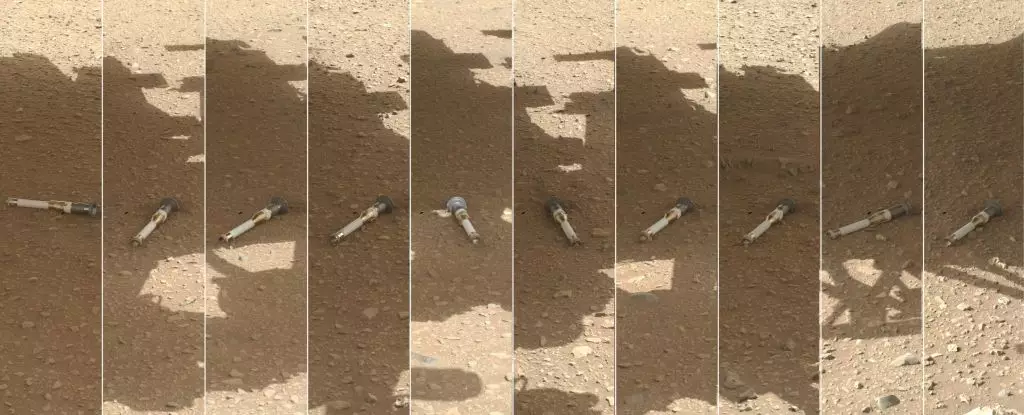The Mars exploration endeavors by NASA have always been a subject of great fascination and scientific intrigue. The Perseverance rover, launched in February 2021, has been a pivotal player in this mission, tasked with collecting and storing samples of Martian rock that could provide invaluable insights into the planet’s history and the potential for life beyond Earth. Yet, recent developments have thrown the future of the Mars Sample Return mission into a shadow of uncertainty. As NASA prepares for a significant briefing on the fate of the samples collected so far, the time has come to critically examine the situation facing one of humanity’s most ambitious scientific projects.
Since its deployment, the Perseverance rover has meticulously gathered samples from the Martian surface. These samples were expertly sealed in canisters designed for eventual retrieval by a follow-up mission that has yet to be outlined without complications. However, a recent evaluation has revealed stark issues regarding budgetary constraints and mission timelines, raising an alarming red flag regarding the feasibility of returning these samples to Earth.
An independent review concluded the Mars Sample Return program is plagued by unrealistic expectations regarding budget and timelines. Such assessments often serve not only to highlight operational deficiencies but also question the mission’s leadership and structure. These criticisms are alarming, particularly within a project of such immense scientific ambition and public interest.
The gravity of the situation intensified when the House and Senate appropriations committees recommended a cut amounting to $454 million from NASA’s 2024 budget specifically aimed at the Mars Sample Return mission. Budget scrutinies are commonplace, yet the severity and scale of the proposed cuts for such an innovative program are cause for concern among the scientific community. Following these budgetary recommendations, NASA itself reduced funding for the mission and laid off numerous workers at the Jet Propulsion Laboratory. Given these setbacks, speculation arose regarding the potential cancellation of the mission, essentially leaving the tantalizing samples stuck on another planet indefinitely.
NASA administrator Bill Nelson and associate administrator Nicky Fox have been vocal about their commitment to these exploratory missions, revealing in April 2024 that the mission had not been canceled. Instead, they conveyed that NASA is exploring alternative avenues to streamline operations, lower costs, and potentially expedite the sample return timeline to before 2040. This announcement was a breath of fresh air in a disheartening narrative but still begs questions about the current operational framework in place.
In the wake of ongoing challenges, NASA has announced a new team tasked with reassessing the structure and strategy of the Mars Sample Return mission, with a comprehensive report due by the end of 2024. This fresh initiative, emphasizing the lessons learned from past reviews, aims to recalibrate the mission’s objectives and enhance its viability. Fox aptly noted that undertaking a mission as complex as this requires an acknowledgment of past challenges and a commitment to diligence.
The upcoming briefing, set for January 7, could very well reshape expectations. It is anticipated that key findings regarding the mission’s future trajectory will emerge from this discussion. Beyond the technical aspects, there looms a fundamental question: can NASA mitigate risks effectively while striving for scientific excellence?
The ultimate goal of bringing Martian samples back to Earth goes beyond mere scientific inquiry; it has implications for our understanding of the universe, the evolution of our solar system, and potentially, the origins of life itself. Given the gravity of these implications, it is crucial that NASA navigates this turbulent phase with transparency and proficiency.
While the Mars Sample Return mission has faced significant hurdles, it remains a beacon of hope for both scientific advancement and public fascination. With renewed efforts and a strategic reassessment of its challenges, there lies a possibility that these Martian samples may one day illuminate not only our understanding of Mars but of life’s broader narrative in the cosmos. As we await NASA’s pivotal announcements, the anticipation continues—will the mission rise to the occasion, or will it become a tale of opportunity missed?


Leave a Reply